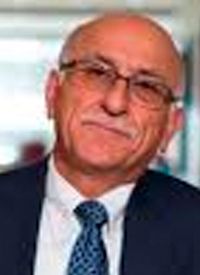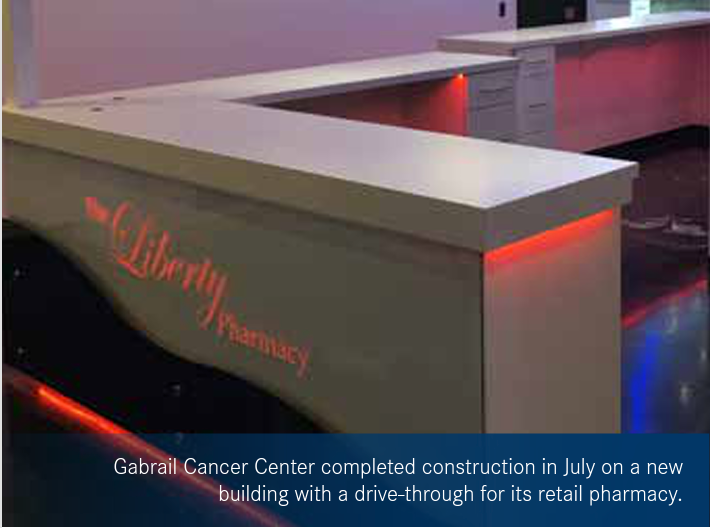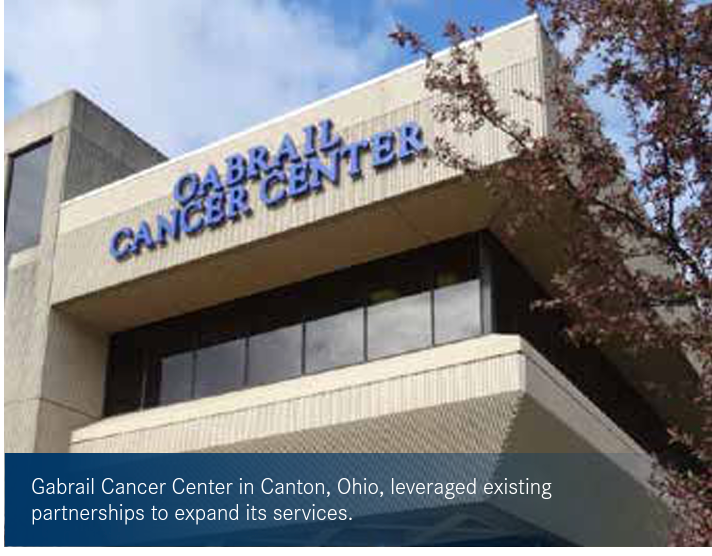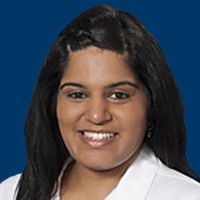Publication
Article
Community Practice Provides Model for Finding New Revenue in COVID-19 Era
Author(s):
The coronavirus disease 2019 pandemic is highlighting how independent community oncology practices are the best source for patients to receive care close to home, while also presenting several challenges for practices and their patients.
Nashat Gabrail, MD

Independent community oncology practices are critical to the fabric of cancer care in the United States. They allow patients nationwide to receive high-quality, affordable, and accessible care in the communities where they live and work.1 While the coronavirus disease 2019 (COVID-19) pandemic is highlighting how a community practice is the best source for patients to receive care close to home, it is also presenting several challenges for practices and their patients.
Patients—either nervous to access care or facing increased barriers— canceled appointments and delayed screening visits.2 On average, oncologists saw a 40% drop in weekly visits from new patients, and cancellations doubled during the first few months of the pandemic’s stay-at-home orders.3
Lower patient volumes not only prevented oncologists and other specialists throughout the country from being able to fully support their communities but also created new financial constraints for these providers. According to 1 survey, 50% of private practices had to furlough office staff, and almost 25% were forced to make permanent layoffs.3 As a result, practices needed to find new ways to provide the care their community needed and to maintain revenues, allowing them to remain viable.
Some practices already had a business strategy in place that positioned them for success. For example, Gabrail Cancer Center in Canton, Ohio, is thriving amid the pandemic because of the trust and partnerships it has built over the years to meet the needs of a rural town that is home to several food processing plants and an Amish community. Gabrail’s ability to look broadly at regional needs of local patients, businesses, and the community at large provides a model from which many practices can learn.
Gabrail Cancer Center completed construction in July on a new building with a drive-through for its retail pharmacy.

The History: Embedding a Practice Into the Community
When Nashat Gabrail, MD, founded Gabrail Cancer Center in 1990, he immediately recognized the importance of building connections with other local businesses and meeting potential patients where they already were. Knowing his Canton, Ohio, community is primarily an industrial and agricultural area with many food processing plants and home to a large Amish community, he saw an opportunity to help meet the health care needs of residents and to create a thriving oncology practice with multiple revenue streams.
He approached the large local food manufacturers and, over time, worked with them to establish on-site clinics at their facilities that provided both preventive and acute care, and also offered oncology screenings and consultations. The practice has maintained some of these clinics for close to a decade, and as COVID-19 began to spread— impacting manufacturing plants (which are densely populated) at greater rates than other businesses—Gabrail was well positioned to provide support.
Early on in the practice’s history, Gabrail’s team built relationships within the local Amish community and worked to gain their trust by offering many of them a nearby, affordable option for cancer care.
In addition, Gabrail Cancer Center implemented a clinical trials program to give local patients convenient access to the most innovative therapies without having to venture hours away to cancer research sites or large hospitals.
Gabrail Cancer Center in Canton, Ohio, leveraged existing partnerships to expand its services.

The Opportunity: Falling Cancer Screenings but Growing Health Care Needs
Many oncology practices across the country saw new patient referrals fall at the start of the pandemic as screening appointments dropped weekly, according to 1 survey.4 Clinical trial programs were also shutting down. According to a recent American Cancer Society survey, more than 50% of cancer researchers reported that their work was temporarily put on hold due to the pandemic.5
At the same time, food manufacturing facilities across the country were finding themselves at particular risk for COVID19 outbreaks due to the density of their workforce. Counties with food processing plants were experiencing infection rates higher than 75% of other US counties.6 These outbreaks were threatening the health of the workers and their families, and they were causing facilities to shut down, leading to food shortages throughout the United States.
To compound these issues, Amish populations across Ohio experienced spikes in COVID-19 cases.7 These outbreaks affected the Amish community in Stark County, Ohio, and in surrounding counties with limited access to local care.
Gabrail saw an opportunity to help address these issues and to protect the longterm viability of his practice: He needed to evolve, invest, and expand.
The Approach: Tailoring Services Based on Need; Ensuring Success
Gabrail leveraged his practice’s existing local partnerships to expand his services, based on the specific needs of managing the spread of COVID-19 as well as its indirect consequences. Gabrail began working with local manufacturers to screen employees according to the Centers for Disease Control and Prevention COVID-19 guidelines.
Gabrail and his team offered temperature checks to employees before they entered the food plant, at their lunchtime, and again when their shift was complete. Should an employee show any symptoms of illness, they were moved to an off-site, outdoor clinic for flu and coronavirus testing.
Gabrail even created a hotline for the food plant employees that they could call to be assessed before reporting to work. And nurses helped patients complete online questionnaires to determine illness or mental health issues that could be exacerbated by the pandemic. These added measures helped ensure the staff was at low risk for infection yet still maintained their essential duties— avoiding supply-chain disruption.
Ultimately, Gabrail avoided practice constriction and, instead, expanded his staff to provide health assessments for more than 2200 employees in the Canton area—which often included 3 assessments per employee, per shift. Recently, Gabrail Cancer Center also expanded its offerings to other states to do mass testing and provide services for more food plants.
Gabrail also had the opportunity to strengthen his relationships with the local Amish community when it experienced a COVID-19 outbreak. When local Amish learned that Gabrail has established clinics at local companies, they, too, turned to his practice. Gabrail Cancer Center would assess their symptoms remotely and if required, would send staff to do viral testing and treat them.
Gabrail also expanded existing services to help members of the Amish community continue to get access to necessary cancer care without fear of contraction. For instance, his cancer center delivered prescription drugs to Amish homes for convenience and to minimize COVID-19 exposure. For current patients, Gabrail purchased a 16-seat van to transport Amish patients receiving chemotherapy and other infusions to ensure they could safely continue treatment.
Also important to both the Amish and larger community was Gabrail Cancer Center’s commitment to maintaining its access to clinical trials. The center kept its program open and added new clinical trials to make up for the research sites that had to close amid the pandemic. As a result, it became the alternative referral site for practice and academic centers.
The Outcome: Increasing Patient Volume; Protecting a Viable Business
By July 2020, Gabrail Cancer Center was supporting 8 food processing plants on a 24/7 basis. Since partnering with Gabrail, all the plants that implemented his screening and health care support have avoided shutdowns and stayed open.
While many US practices were suffering from decreased patient volume, Gabrail Cancer Center reported an uptick in new patients seeking clinical trials. And with this ongoing demand for care and services from local communities and businesses, Gabrail hired more than 43 highly qualified providers who had been furloughed or laid off from other local hospitals.
Gabrail also leveraged the surge in need and temporary revenue to help ensure his practice will remain viable. He was even able to complete the construction of a new building with a drive-through for his retail pharmacy in July. Previously, the pharmacy had been located in a small space inside the cancer center.
And, potentially most important for the future, Gabrail further positioned himself within the community as a connected, embedded provider who understands the unique needs of the region.
The Takeaway: Learning From the Model and Looking Ahead
Not every practice will be able to do what Gabrail Cancer Center did, but the broader implications of its approach offer learnings for all community oncologists. Gabrail’s ability to understand and assess the region’s most critical needs and think creatively about how its services could fill those gaps— even temporarily—is an important lesson. All community-based care providers have the opportunity to use their position and local knowledge to adapt to whatever threatens their community’s health.
“Community providers should always be considering other revenue streams for their practice,” Gabrail said. “This pandemic represented an unexpected challenge for us, and we are providing a service to our community and the businesses, helping to keep our own community healthier.”
As practices have begun to return to more “normal” day-to-day operations in the face of growing numbers of COVID-19 infections, patients may continue resisting care. They may think they are protecting their health by staying home and avoiding centralized points of care, like community practices. But thousands of excess cancer deaths are expected to occur over the next decade as a result of missed screenings, delays in diagnosis, and reductions in oncology care caused by the COVID-19 pandemic.8
It’s imperative that oncology practices proactively engage their patients and address their fears. Through social channels and their marketing efforts, oncology practices can reinforce that now is the time for patients to prioritize their health. Oncology practices can also connect with and demonstrate a commitment to their patients through surveys and follow-up phone calls.
Community-based care providers also need to share all new protocols and procedures they are implementing to ensure patients can be safely seen and treated.
References
- Fact sheet: what is community oncology? Community Oncology Alliance. 2017. Accessed August 6, 2020. https://bit.ly/3a2IF38
- Yermal B. Amid pandemic, public wary of seeking non-coronavirus care from providers. Morning Consult. May 7, 2020. Accessed August 6, 2020. https://bit.ly/31tKbaN
- Lash Group. Patient Assistance in the Wake of COVID19. Webinar. Xcenda. May 8, 2020. Accessed August 6, 2020. https://bit.ly/3kiCZGN
- The early impact of COVID-19 on community practices. Roundtable. AmerisourceBergen. July 28, 2020. Accessed August 6, 2020. https://bit.ly/2DkU8iK
- Survey: half of cancer researchers report their work is on hold. News release. American Cancer Society. May 8, 2020. Accessed August 6, 2020. https://bit.ly/2EXWq7O
- Bagenstose K, Chadde S, Wynn M. Coronavirus at meatpacking plants worse than first thought, USA Today investigation finds. USA Today. April 22, 2020. Accessed August 6, 2020. https://bit.ly/3fAlpL4
- Thompson A. Coronavirus: Ohio’s Amish Country sees cases spike as tourists return. Wooster Daily Record. June 16, 2020. Accessed August 6, 2020. https://bit.ly/3a8823x
- Sharpless NE. COVID-19 and cancer. Science. 2020;368(6497):1290. doi:10.1126/science.abd3377









